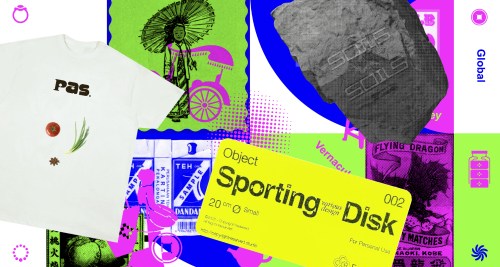Rubahitam: Creating Dimensions Through Consistency
One day in 2024, Rifqi could not sleep for several nights. He was waiting for a 12K render to finish for the exhibition Leonardo DaVinci: 500 Years of Genius at LUME Melbourne. “I was nervous and couldn’t sleep,” he said. The work, titled Pigment, took several days to render. For six months, it was seen daily by hundreds to thousands of visitors. Rifqi calls it one of the most challenging projects in his career.
A similar level of pressure had come five years earlier when he was commissioned to create live visuals for two Bring Me The Horizon songs in the Amo tour. “Wonderful Life” and “Mother Tongue” had to be completed in three to four weeks, in high resolution, and ready for the stage. “Oliver Sykes gave me full creative freedom,” he said. “But that was actually one of the difficulties.”
From the outside, Rifqi’s journey seems consistently rooted in the visual arts, but it began with a simple curiosity for editing videos. In 2007, when he was in 5th grade, he made a short film with his friends in Bantul. His tools were a DiVi Cam 428 bought from his circumcision gift money and a Core-2-Duo computer. “I was the cameraman and editor using Windows Movie Maker,” he said. From there, he learned Adobe Premiere Pro and later Macromedia Flash, which led him to 2D animation.
His next obsession came from MTV Indonesia. He paid close attention to animated logos, visual bumpers, and transitions between programs. “I didn’t yet know the term MTV Idents or motion graphics,” he said. Even so, he began calling himself a motion designer long before he fully understood the term.
In high school, he taught himself 3D animation using Cinema 4D. Internet access was limited, so most of the learning process came from trial and error. During this period, he founded a small studio called rubahitam with seven classmates. It lasted until three years after graduation.
The name rubahitam reappeared when he received his first professional commission while studying English literature at Universitas Gadjah Mada in 2015. He balanced freelance projects with academic life. Although his studies were not directly related, he admits that English proficiency became useful when communicating with overseas clients. “Ten years later, I am still in the same field,” he said.
Aesthetically, Rifqi grew up immersed in early 2000s pop culture: Y2K style, MTV, flip phones, PlayStation 1 and 2. “Bulky objects, curvy shapes, vibrant colors all come from the design and fashion of that era,” he explains. He spent long hours playing video games at home and at PS rental shops. “Recently my work has taken on a darker mood, influenced by early 2000s game visuals like Resident Evil and Silent Hill,” he said.
Technically, he combines 2D characters with 3D environments. He calls his approach Hybrid 2D/3D Art. “I grew up with 2D art in junior high and 3D art in high school,” he said. That combination later became his visual signature.
Of all the projects he has worked on, one of the biggest technical difficulties came from food-related artworks. “The challenge is making food or drinks look appetizing,” he said. He must ensure that textures and 3D forms are accurate enough so viewers can immediately recognize what they are looking at.
Many of his works contain personal experiences, emotional expression, and real-world anxieties. One of them is Artificial Intelligent (2023), created in response to the increasing ease of image production using AI. “Will the artist profession die in the next few years?” he asked. In the work, he portrays a badminton court as a playground for artists, where human players are killed and replaced by robots.
That anxiety makes him pay closer attention to intellectual property issues. In his view, visual artists in Indonesia need spaces that value creative labor properly. He sees signs of optimism. Many events now provide platforms for artists to exhibit or sell their works, joined by hundreds or even thousands of participants. Public appreciation also seems to grow in parallel. He points at the success of the locally produced 3D animated film Jumbo, which reached ten million viewers and became the highest-grossing Indonesian film of all time.
“In my opinion, Indonesia’s creative industry has improved and could advance much further if the government starts seriously developing a sustainable and well-regulated creative ecosystem, from education to funding and intellectual property protection,” he said.
Amid concerns about AI and shifting visual industries, Rifqi continues to work through rubahitam. He creates from memory, curiosity, and the need to process unease. His work moves from simple 2D animation experiments in a junior high school bedroom to immersive exhibitions and international concert stages. What he does today, he believes, still comes from the same consistent habit. Years later, he remains in the same field.














